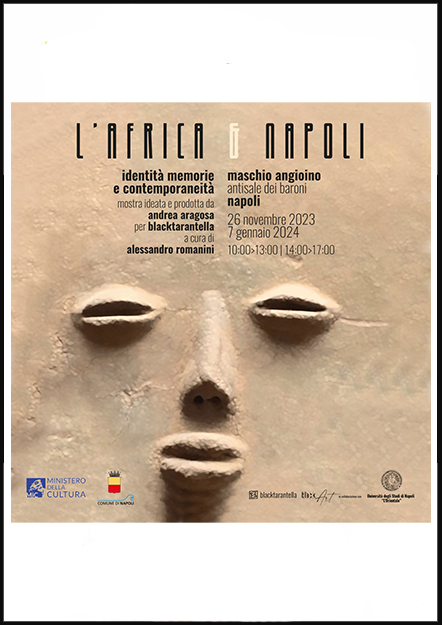
The exhibition "Africa & Napoli. Identity, Memories, and Contemporaneity," conceived and produced by Andrea Aragosa and curated by Alessandro Romanini, aligns precisely with this purpose. The cultural legitimization of colonialism led European scholars to consider African artistic expressions as "primitive," effectively preventing any potential fruitful exchange.
Evidence of the life of "peoples without writing" was initially shelved and only later displayed in ethnographic museums, without distinguishing between objects of material culture and works of art. The change in approach and perspective came with the artistic movements of the early 20th century, the so-called "historical avant-garde," initiating an extraordinary dialogue between Western artistic culture and African visual culture. The latter was recognized for the archaic originality of its forms, as well as its symbolic and spiritual value.
The first exhibitions of 'black art' were organized in Prague in 1911, Germany in 1912, Paris in 1913, and New York in 1914. During the same period, catalogs and monographs of fundamental importance for understanding new expressions from Africa were published: Carl Einstein Negerplastik, Leipzig (1914); Marius de Zayas, African Negro Artists Influence on Modern Art, New York (1916); Paul Guillaume and Guillaume Apollinaire Sculptures nègres Paris (1919); H. Clouzot and A. Level L’Art Negre et l'Art Oceanien, Paris (1919); V. Markov Isskustvo Negro St. Petersburg (1919). At the Venice Biennale in 1922, about thirty works by African artists were exhibited within the Italian pavilion, providing an interesting glimpse into that creative production curated by Carlo Anti and Aldobrandino Monchi.
Twelve years later, Naples hosted the Triennale d’Oltremare at Maschio Angioino, inaugurating in 1940 the Triennale delle Terre d’Oltremare at the Mostra d’Oltremare, once again demonstrating an ability to anticipate ferment and avant-garde movements. It is also worth noting that Naples has been the seat of the Società Africana D’Italia since 1850. The period from 1930 to 1940 saw Paris and New York aligned: the Galerie Picalle in the French capital successfully celebrated an exhibition of African author objects (1930), inspiring "African Negro Art" at the MoMA in New York (1935). This was followed in 1938 by the exhibition curated by Robert J. Goldwater, "Primitivism in Modern Painting," dedicated to the comparison between 20th-century avant-garde movements and primitive art sculptures.
This history was written by enlightened intellectuals and artists, from Apollinaire to Matisse, Picasso, Brancusi, Giacometti, and the surrealist and Dadaist movements. It was also shaped by the commitment of visionary gallery owners who believed in the poetry of African artists, such as Paul Guillaume and Charles Ratton, fostering a fruitful dialogue with Europe and, naturally, with Italy, represented by De Chirico, Savinio, and Modigliani, as evidenced by Paul Guillaume's written testimonies between 1914 and 1917. These developments were crucial in arriving at the concept of "African art" without any conditioning. William Fagg, perhaps the greatest Africanist of the 20th century, summarized this turning point: "Art in its purest form concerns the communication of the ineffable, which is beyond words."
One cannot tell the story of Africa without the voices of its intellectuals, especially Leopold Sédar Senghor, Aimé Cesairé, and Cheikh Anta Diop. It's a grand story marked by an awareness of pain but also by hope, as encapsulated in the famous speech on Colonialism (1950) by the French-speaking Caribbean poet and writer Aimé Cesairé: "A civilization that proves incapable of solving the problems it creates is a decadent civilization. A civilization that chooses to close its eyes to crucial issues is a compromised civilization." A pain that believes in healing. A pain that can demand hope. Contrastingly, the words of the Sicilian philosopher Salvatore Natoli in his book "The Experience of Pain" (1986) counterbalance Aimé's sentiments: "The world cut by the perspective of pain manifests as asymmetrical and demands to be sutured.